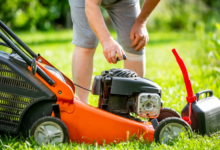Timing Is Everything: Why Seasonal Awareness Matters in Hedge Trimming

When it comes to garden care, few things offer the same immediate visual impact as neatly trimmed hedges. A well-maintained hedge frames a garden, creates structure, and delivers a sense of order. But good hedge trimming is about more than technique or equipment—it’s also about timing. Trimming at the wrong time of year can hinder growth, leave hedges vulnerable to disease, or even break wildlife protection laws. Understanding the natural growth cycles of hedges and knowing when to trim is crucial if you want strong, healthy, and beautifully shaped results.
Hedges are living systems, not static garden features. Like all plants, they respond to changes in temperature, light levels, and seasonal patterns. Cutting at the right time encourages dense growth and healthy regrowth. Cutting at the wrong time can shock the plant, damage new buds, or expose stems to frost or drought. Every hedge species has its own rhythm, and working with that rhythm makes trimming easier and more effective.
Most hedges can be trimmed twice a year—once for structure and once for shaping. The first key trimming window typically comes in late winter or early spring, before the new season’s growth begins. This is an ideal time for heavier pruning or reshaping, as the plant is still dormant and less vulnerable to shock. Deciduous hedges like hornbeam, beech, and hawthorn benefit from this kind of “hard” pruning. It helps reinvigorate older stems, clears away dead wood, and sets the structure for the growing season ahead.
Evergreens such as yew, box, and laurel can also be trimmed in early spring—but with a lighter touch. Unlike deciduous species, evergreens retain their foliage year-round and can be more sensitive to deep pruning. While yew responds well to reshaping, fast-growing species like leylandii must never be cut back into old wood, as they do not regenerate from it. Timing is especially critical for these varieties because one overzealous cut in the wrong season can cause permanent gaps.
The second trimming period usually falls in mid- to late summer. This is the time for maintenance cutting—removing new growth, shaping up edges, and ensuring the hedge keeps its defined form. Trimming in summer allows you to tidy up the flush of spring growth and maintain control of vigorous species. For example, privet and leylandii grow quickly in warm months and often need two or three trims per year to keep them tidy. A summer trim helps manage their size and stops them from encroaching on paths or neighbouring properties.
However, there’s an important caveat to trimming during spring and summer: wildlife protection. In the UK and many other countries, the nesting season for birds runs from March to August. During this time, it’s both unethical and potentially illegal to disturb active nests. Many species build homes in hedges—especially thick ones like hawthorn, ivy, and privet—so always inspect thoroughly before starting any trimming. If you find a nest, delay work until the young have fledged and the nest is no longer in use.
Late summer trimming also offers horticultural benefits. When done carefully, it encourages dense regrowth and helps hedges maintain their shape through autumn and into winter. But trimming too late in the season can be problematic. If you cut in late autumn or early winter, new growth stimulated by the trim may not harden before the first frost. This tender growth is highly susceptible to cold damage, which can lead to dieback or disease.
For some species, especially slow-growing evergreens like box or holly, trimming in hot weather can also cause foliage to scorch—particularly on sunny days. It’s best to schedule hedge work for a cool, overcast day when the plant can recover without added stress from heat or dehydration. Early morning or late afternoon work is also preferable to avoid the sun’s strongest hours.
Climate also plays a role in timing. In milder regions with longer growing seasons, you may find that hedges require more frequent maintenance trimming. In colder regions with shorter summers, growth slows sooner and you may only need to trim once per year. Paying attention to your local climate patterns will help you develop a trimming schedule that supports both health and appearance.
It’s also useful to understand timing in relation to hedge age. Newly planted hedges need formative pruning in their first two or three years. This encourages bushy, even growth from the base upward and avoids leggy gaps in later years. This kind of pruning should happen in the plant’s dormant season, and it’s crucial not to skip. Once the hedge is established, maintenance trimming can begin—but neglecting the early shaping stage will always show later on.
See also: Sustainable Living Tips for a Greener Home
If you’re unsure when your particular hedge species should be trimmed, or how it responds to cuts, it’s worth seeking professional advice or doing a bit of research. The difference between a well-timed trim and a poorly timed one is not always visible right away—but over seasons, it becomes very clear. A hedge that’s pruned correctly at the right times of year grows stronger, fuller, and more evenly than one that’s trimmed sporadically or during stressful conditions.
For gardeners who prefer to use mechanical tools—electric or petrol-powered trimmers—timing also helps reduce wear and tear on the machine. Trimming soft new growth is easier on blades and motors than trying to cut through woody, overgrown material. Regular, seasonal maintenance cuts keep your equipment working smoothly and reduce the risk of accidents caused by forcing tools through thick or tangled foliage.
Finally, proper timing supports plant health and garden aesthetics. Hedges trimmed too early may not hold their shape for the full season, while those cut too late may look rough through the winter months. By aligning your trimming schedule with natural growth patterns, you keep your garden looking sharp and your hedges thriving throughout the year.
Retailers like Garden Machinery Direct not only offer the tools needed for seasonal trimming but also provide advice and resources to help gardeners align their hedge maintenance with the right time of year. Combining the right tools with informed timing leads to better results, less plant stress, and healthier growth overall.
In conclusion, knowing when to trim your hedge is just as important as knowing how. Timing influences everything—recovery, regrowth, wildlife safety, and plant vitality. Whether you’re reshaping a yew in March, tidying up a privet in July, or avoiding cuts during nesting season, seasonal awareness is the quiet discipline behind truly great hedge work. Respect the rhythm of the plant, and your hedge will reward you with years of strength, structure, and beauty.






